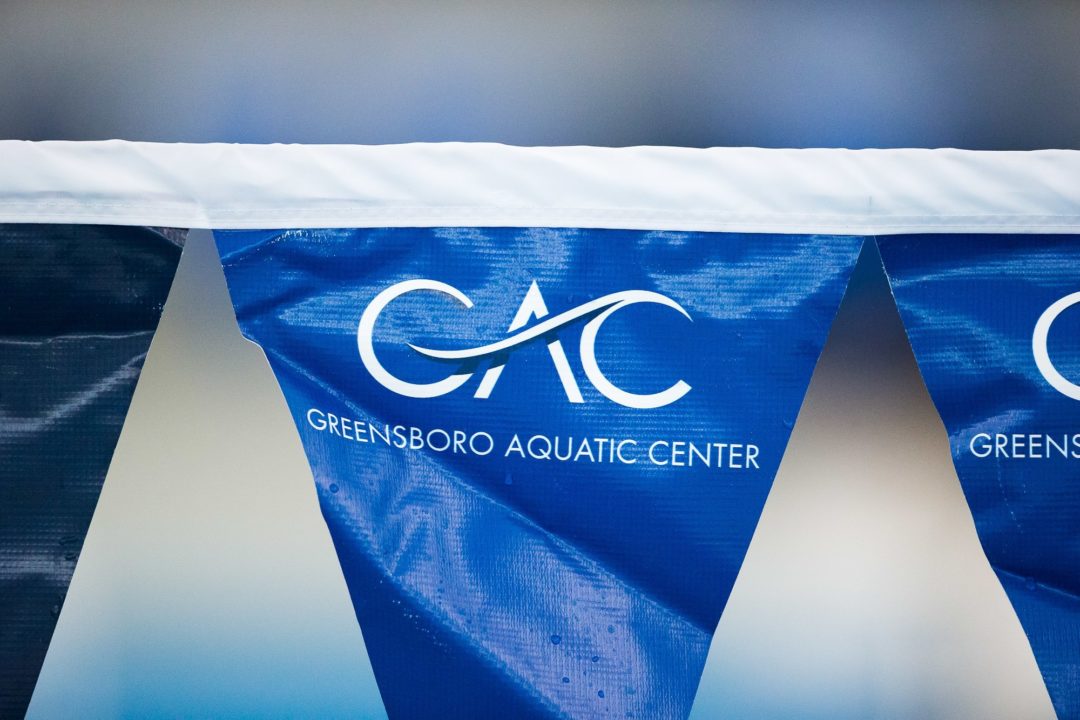The Greensboro Aquatic Center (GAC) located in Greensboro, North Carolina has released its operational figures, revealing both pluses and minuses of the facility’s presence.
The GAC opened in 2011 as a 78,323-square-foot indoor state-of-the-art aquatic facility. It currently houses an 8-lane, 50m competition pool that can also accommodate 16-22 lanes for short course. The facility also was built with a therapeutic pool, and 25-yard diving well with 6 swimming lanes and 8 diving apparatus. It cost approximately $19 million to build, of which $12 million was funded by taxpayer bond, while $7 came from a hotel tax.
According to GAC-released figures, the facility has made an economic impact of more than $130 million since its opening. It employs 11-full time staff members and about 100 part-time employees. GAC Director Susan Braman says that the facility runs an operational deficit to the tune of $350,000, which, she says, is much better than the typical $1 million to $1.5 million overruns other sites of this size can incur.
However, Braman states, “If anybody is thinking they’re building it so that there’s this big profit margin, there’s not.” GAC has a budget of $1.5 million and operates 15 hours a day.
The GAC has been in high demand since its opening, evidenced by the facility having already hosted the 2012 U.S. Masters Swimming Spring National Championships, the 2015 NCAA Women’s Swimming & Diving Championships, and the 2016 ACC Men’s and Women’s Swimming & Diving Championships.
The site is also proposing an expansion project, estimated to cost less than $5 million, which would add a 50-meter pool with 5 lanes on the east side.

I’ve swum at that pool twice, at the 2012 and 2016 USMS Spring National Champs. Great facility, and I’d love it if they add another 50m pool…but why only 5 lanes? Why not 8 lanes, and it can then be used for large long course meets, or even bigger short course meets?
I believe it will just be for warm-up. Similar to how the IUPUI just has a 5-lane warm-up 50m pool.
I’d like to see the details on how the computed a $130 million dollar impact.
It’s typical Conventions and Visitors Bureau math– which is always suspect. They have formulas that look at hotel occupancy, number of event visitors, their supposed spending on food and beverage, etc. Very secretive, and somehow I don’t think an age group meet is quite as lucrative as something like the GOP Convention. But C&VB everywhere does their dog and pony shows and the local governments eat it up.
For instance, see http://www.charlotteobserver.com/news/local/article9083114.html
Look on the bright side– it is keeping a great pool complex open.
Pretty much what I thought. There must be a creative way to capture some small part of that revenue in order to bring the project into break-even. For example, and I have no idea whether this is practical, a GAC website for hotel bookings where a small percentage of click-throughs/bookings generates a fee with some promo to get attendees to use the site (assigned seats with great views at general admission price). If the 130 million number is even remotely close then a small percentage would cover the deficit. The benefits of break even are obvious….no need for continual dog and pony shows to justify the operation.
To actually “break even” they would to generate additional cash flow to set aside for a reserve fund for major repairs and maintenance. There is nothing worse that a fifty year old swimming pool with no money set aside to replace or repair anything like at my daughters high school